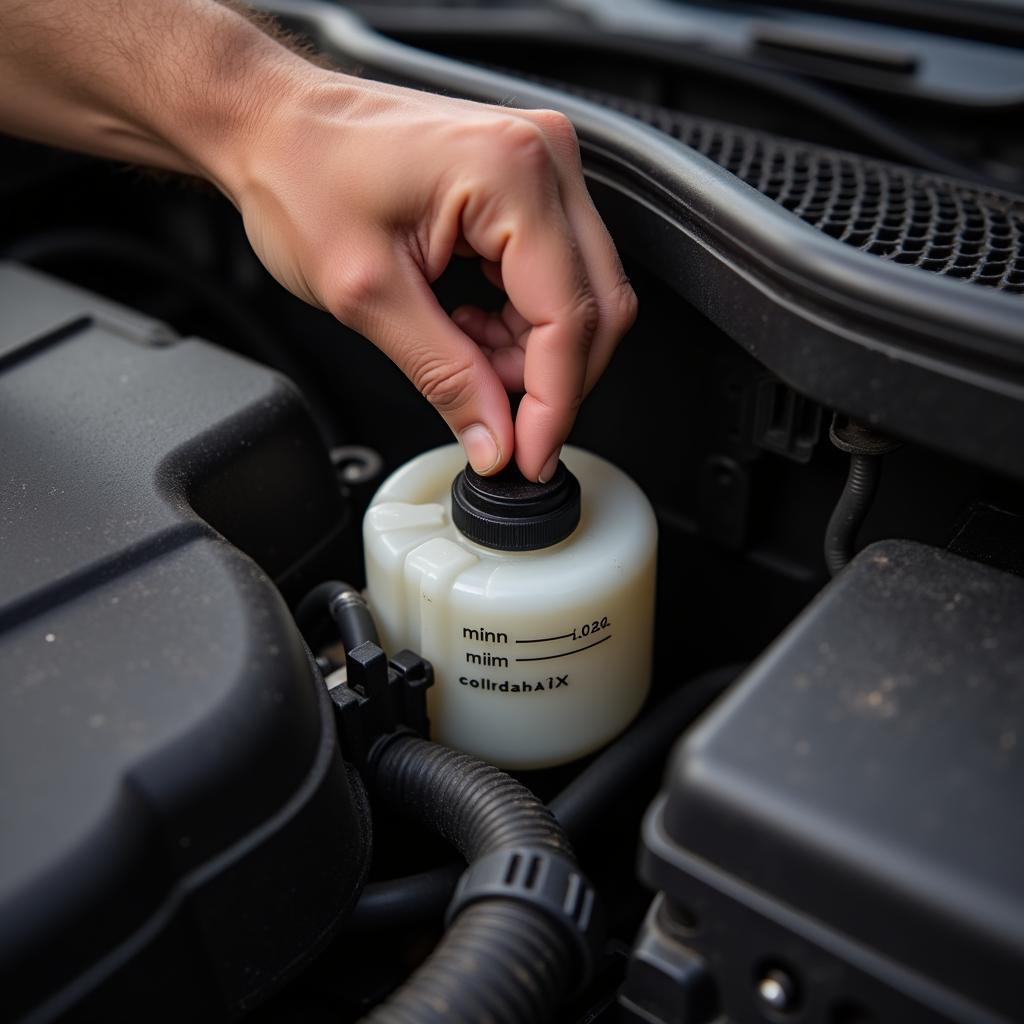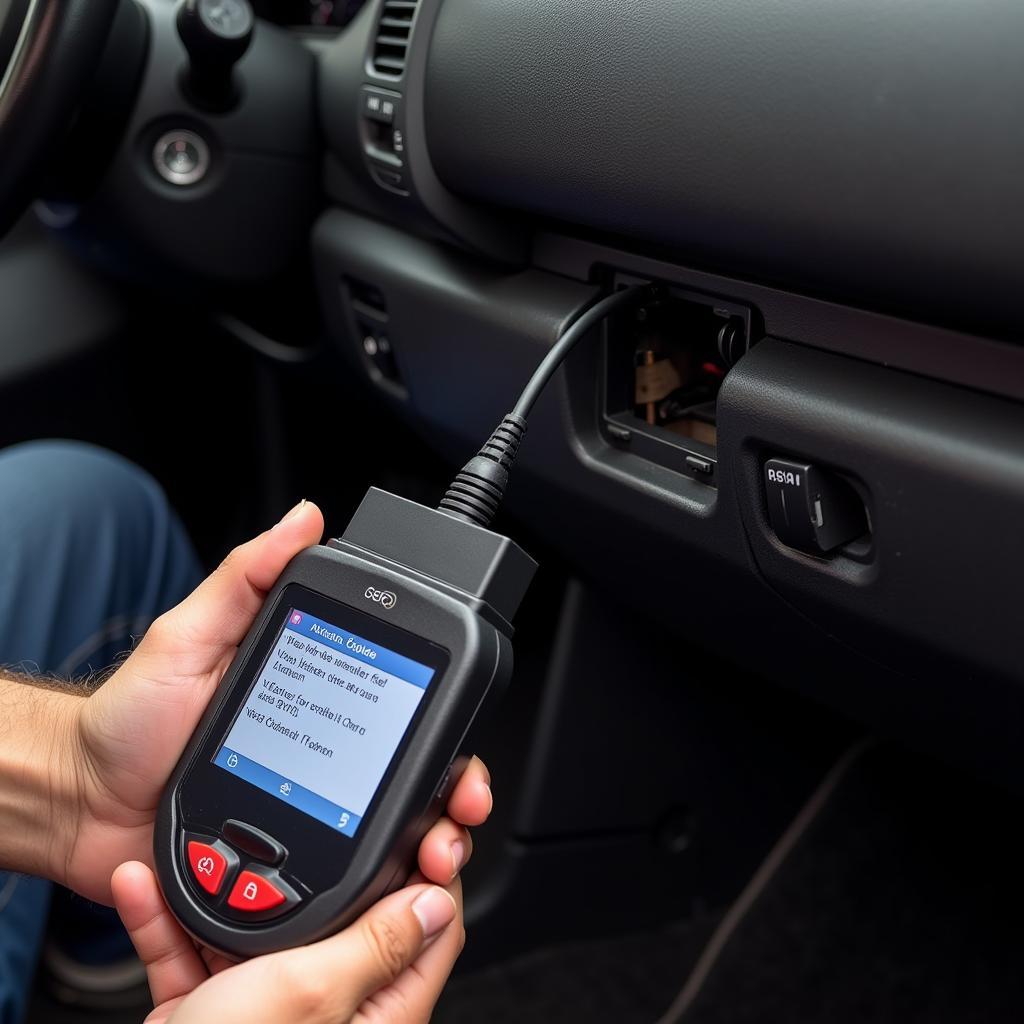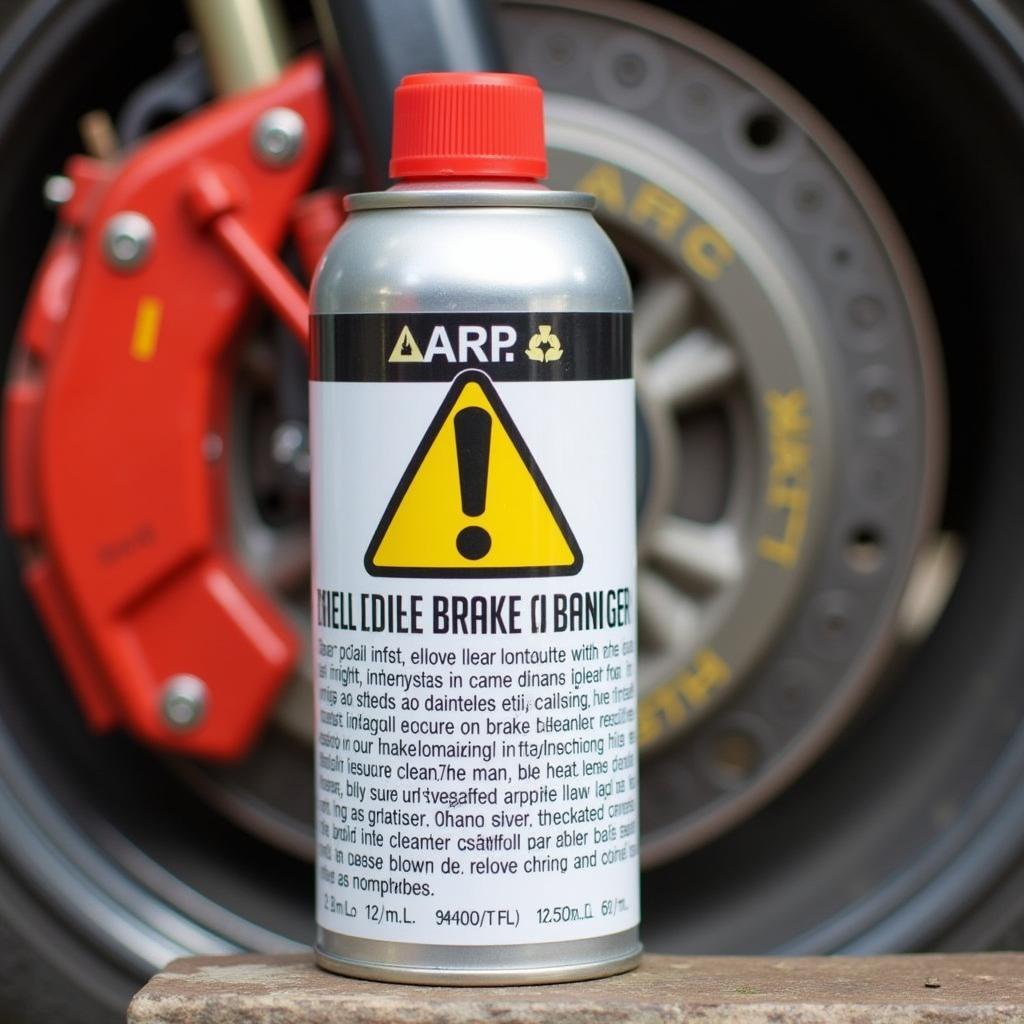The brake warning light on your 2008 Ford Econoline E350 is a crucial safety feature designed to alert you to potential problems within your braking system. Ignoring this warning light could lead to brake failure and a dangerous situation. This guide will walk you through the common causes of the brakes warning light, how to diagnose the issue, and the potential solutions.
Understanding Your E350’s Brake Warning Light
When you start your E350, the brake warning light should illuminate briefly as part of the system self-check. If it turns off as expected, your brake system is likely functioning correctly. However, if the light stays on, flashes intermittently, or illuminates while driving, it’s signaling a problem.
Common Causes of a Brakes Warning Light on a 2008 Ford Econoline E350
Several factors can trigger the brakes warning light on your E350. Here are the most common culprits:
- Low Brake Fluid Level: The most common reason for the warning light is low brake fluid, often indicating a leak in the system.
- Worn Brake Pads: Brake pads have wear indicators that make a screeching sound when they’re thin. If ignored, the warning light might activate.
- Faulty Brake Pad Sensor: A malfunctioning brake pad sensor can trigger the warning light even with sufficient pad thickness.
- ABS Issue: While less common, a problem with the Anti-lock Braking System (ABS) can also trigger the warning light.
- Parking Brake Engaged: Sometimes, the simplest answer is the right one. Ensure your parking brake is fully disengaged.
 Checking Brake Fluid Level
Checking Brake Fluid Level
Diagnosing the Problem
Accurately diagnosing the cause of the warning light is essential for an effective repair. Here’s a step-by-step guide:
- Check Brake Fluid: With the engine off, locate the brake fluid reservoir under the hood. Check the fluid level – it should be between the minimum and maximum lines.
- Inspect Brake Pads: If possible, visually inspect your brake pads through the wheel spokes for excessive wear.
- Scan for Codes: A diagnostic scanner can read trouble codes stored in your E350’s computer, providing valuable insights into the issue.
 Reading Diagnostic Trouble Codes
Reading Diagnostic Trouble Codes
Solutions and Repairs
The solution to your brakes warning light depends on the diagnosed cause:
- Adding Brake Fluid: If the fluid level is low, carefully add the correct type of brake fluid recommended for your E350. However, simply adding fluid without addressing the root cause of a leak is not a long-term solution.
- Brake Pad Replacement: Worn brake pads require immediate replacement to ensure safe braking distance and prevent damage to other brake components.
- Brake Sensor Replacement: If you suspect a faulty sensor, it’s best to have a qualified mechanic diagnose and replace it.
- Professional Diagnostics: For ABS issues or if you’re uncomfortable performing the above steps, it’s best to consult a qualified mechanic specializing in Ford vehicles.
When to Seek Professional Help
While some brake warning light issues can be addressed with basic DIY maintenance, others require the expertise of a professional mechanic. If you’re uncertain about diagnosing the problem, encounter difficulties, or suspect a more complex issue, it’s always best to err on the side of caution and seek help from a qualified professional.
“Remember,” says John Miller, a seasoned automotive engineer with over 20 years of experience, “brakes are your vehicle’s most crucial safety system. Never delay addressing any warning lights or unusual braking behavior.”
Conclusion
The brake warning light on your 2008 Ford Econoline E350 is a serious safety concern that should never be ignored. By understanding the common causes, following the diagnostic steps, and taking appropriate action, you can ensure the safety and reliability of your vehicle’s braking system.
FAQs
Q: Can I drive my E350 with the brakes warning light on?
A: It’s strongly advised against driving with the brakes warning light illuminated. Doing so could lead to brake failure and a dangerous situation.
Q: How much does it cost to fix a brakes warning light issue?
A: The cost varies greatly depending on the underlying cause, ranging from a few dollars for brake fluid to hundreds for brake component replacements.
Q: How often should brake fluid be replaced?
A: It’s recommended to have your brake fluid flushed and replaced every 2-3 years or as recommended in your E350’s owner’s manual.
Q: Can I use any brake fluid in my E350?
A: No, using the incorrect type of brake fluid can damage your braking system. Refer to your owner’s manual for the specific type recommended for your E350.
Q: How can I prevent future brakes warning light issues?
A: Regular vehicle maintenance, including brake inspections and fluid flushes, is crucial for preventing brake problems and ensuring your safety on the road.


